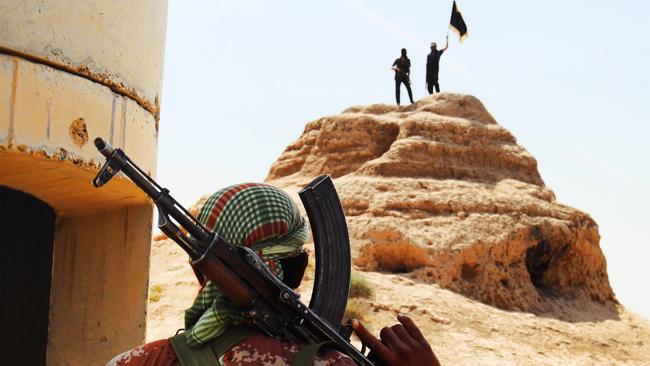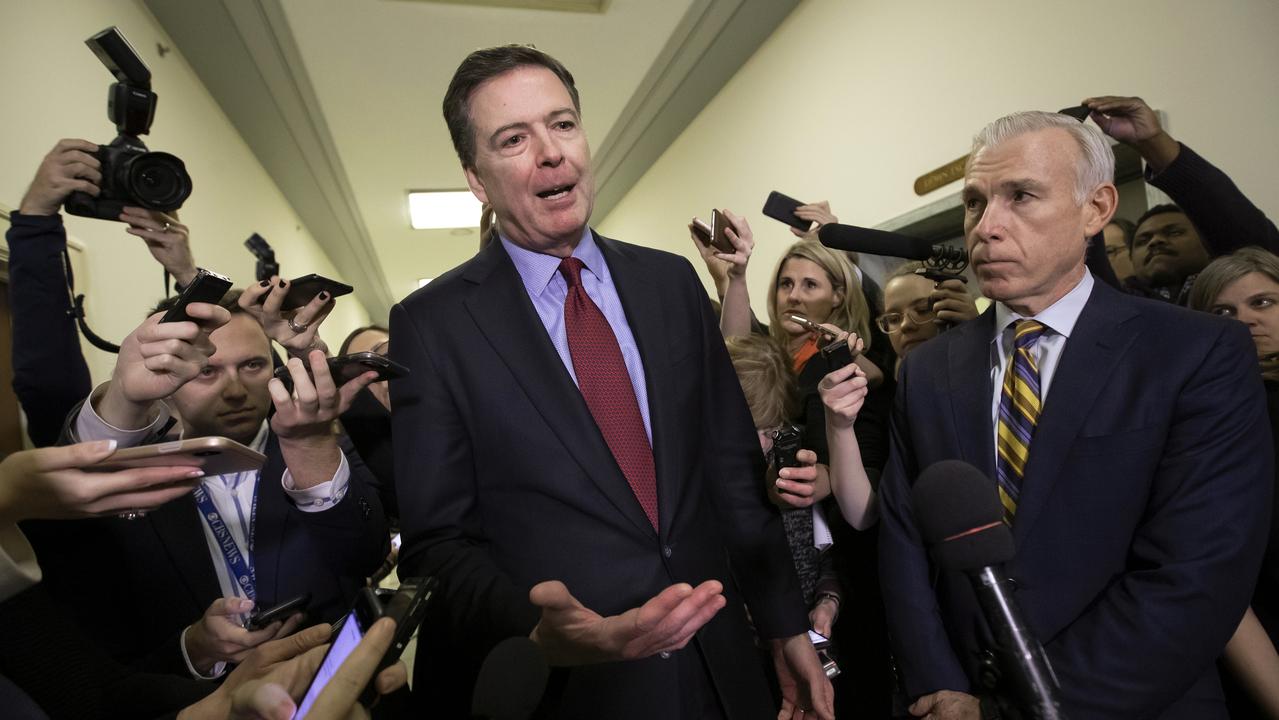Jihadists on march to Mid East caliphate
AIMING for a ‘Shia crescent’ from Iran to Lebanon, ISIS is redefining the region.

AFTER spending $US2 trillion on the war in Iraq and training local security forces, the US this week saw the reality of its costly, and tragic, investment: Iraqi soldiers fleeing checkpoints without firing a shot, tearing off their uniforms as they ran.
This week a highly menacing fighting force came close to bringing down the government in Iraq — which is backed by both the US and Iran. The Islamic State of Iraq and Syria, a jihadist group that few people had heard of a year ago, changed the Middle East and made clear it is now a force with which to be reckoned.
It pulled off an extraordinary military victory in northern Iraq against an army until recently funded and trained by the US.
The ease with which ISIS, the most savage and ruthless jihadist group in the Middle East, seized Iraq’s second-largest city, Mosul, and pushed within 90km of Baghdad, stunned the West.
But just as it was an astounding military success by ISIS it was an astounding intelligence failure by Iraq and the US, which still has a great stake in Iraq.
Given the CIA’s ongoing interest in Syria and Iraq, how did they not know ISIS was planning to attack a city as strategic as Mosul?
Suddenly, in the reworked Middle East, Iran and the US share a strategic goal; both want to prevent ISIS taking power in Baghdad.
For Iran, the leader of the Shia world, Baghdad is a bulwark against their Sunni rivals. As long as the Shia regime of Nouri al-Maliki remains in power, Tehran has a “Shia Crescent” through Iran, Iraq, Syria and Lebanon.
And despite reservations about al-Maliki the US prefers the status quo over a group which has beheaded people for not being “sufficiently Islamic”.
Tehran and Washington will resist with equal determination ISIS’s ambition to establish a caliphate, or Islamic state, across the Levant. ISIS wants this to include Iraq, Syria, Lebanon, Jordan, Israel and the Palestinian territories, even extending to North Africa.
But for now it involves the two theatres where it is fighting — Syria and Iraq. Its victories this week give it a mini-caliphate — it is now in control of the northern parts of eastern Syria and western Iraq.
A panicked Iran dispatched Revolutionary Guard advisers to Baghdad to help defend the capital and the US foreshadowed support.
This raises the intriguing possibility that Iranian and US advisers could be together as they try to shore up the Iraqi government.
There are scores of jihadi groups roaming Syria and Iraq. Last week in Turkey, near the border with Syria, I met injured fighters from two of them. One was a group called Skur el-Sham and the other Sham Islam.
Syria has become the new magnet for jihadists but ISIS is not a rag-tag mob like many of them.
Within 24 hours of taking Mosul it set up checkpoints with lists of names of Iraqi security force personnel. Anyone on the list it caught was taken away and, quite possibly, beheaded.
It is well organised and ruthless — on the battlefield this gives it power as people are terrified of its fighters. One observer who has seen ISIS operating in Syria told Inquirer:
“ISIS will do anything — if they see three men by the road one might say I don’t trust those men and another will just pull out his gun and shoot them.”
Summary executions, kidnappings, crucifixions and suicide bombings are parts of its armoury.
ISIS now controls much of the border between Syria and Iraq, which means at short notice it can call on thousands of Sunni fighters — its own and from other groups — who may want to help bring down the Shia regime in Baghdad.
The main winner from this is Bashar al-Assad who is likely to see the number of fighters against his regime fall as they rush to join the new jihadi adventure.
The ability to bring large numbers of fighters across the border quickly gives a huge power to ISIS and it is set to get stronger.
One reason ISIS proved devastatingly effective in Iraq this week is because its leader, Abu Bakr al-Baghdadi, knows the country so well. Baghdadi was born in Iraq in 1971 and learnt his fighting skills with al-Qa’ida after the 2003 US invasion of Iraq.
The strength of ISIS was already obvious given that it took Fallujah in January and the army was unable to force it out. The most reliable barometer of ISIS’s power was the lack of confidence residents had in security forces; 500,000 people fled rather than rely on the army to protect them.
The US clearly regards al-Maliki as mediocre. First, al-Maliki’s response was astounding. The second largest city in his country had fallen and his reassurance to the Iraqi public was “we are getting ready” to respond. He pledged to “reorganise” the security forces, which must have come as a surprise to the US military who has been training them for a decade.
Even more astounding, his suggestion to deal with his deserting soldiers was to arm civilians — presumably they would be prepared to face ISIS. Washington’s biggest criticism of al-Maliki is that despite being in his third term he has been unable to form a government including two key constituencies, Sunnis and Kurds.
But al-Maliki surely must listen to Washington’s criticisms with a wry smile. A key reason Iraq is today close to being a failed state is Washington’s mismanagement after the invasion. Its first — and biggest — mistake was a political scorched earth approach to the government. Paul Bremer, the US administrator, decided to purge any possible remnants of Saddam Hussein’s Baath party, the so-called “De Baathification”.
Almost anyone who was a Sunni was forced from the top jobs — this meant everyone who knew how to run the country was sacked, creating chaos and a massive well of embittered and well-connected people.
Last year, Bremer admitted this had all gone wrong but said the mistake he made was delegating to Iraqi politicians the policy of targeting Saddam loyalists.
They had, he said, “broadened it … it gave the impression that we were prepared to carry out a really wholesale de-Baathification of the entire society. And that was clearly not our intention.”
Despite urgings from the US, al-Maliki has not brought moderate Sunnis into the government.
The Sunnis are bitterly alienated but al-Maliki has also outraged the other key constituency: he stopped paying Kurdish civil servants. An irony is that the semi-autonomous Kurdish region in the north is now the only safe place in Iraq. Many of the 500,000 people fleeing Mosul headed there. And al-Maliki is relying on Kurdish security forces to protect oil facilities.
The dysfunctionality of Iraq’s political establishment was shown this week. Despite the fact that al-Maliki said Iraq was facing “a ferocious terrorist campaign” and that ISIS was within striking distance of Baghdad he could not even convince parliament to declare a state of emergency.
Mosul’s leading politician Atheel al-Nujaifi said he had warned al-Maliki ISIS was about to attack but was ignored.
The question now for the West is this: does it need to re-engage in a country it has spent a decade trying to extricate itself from?


